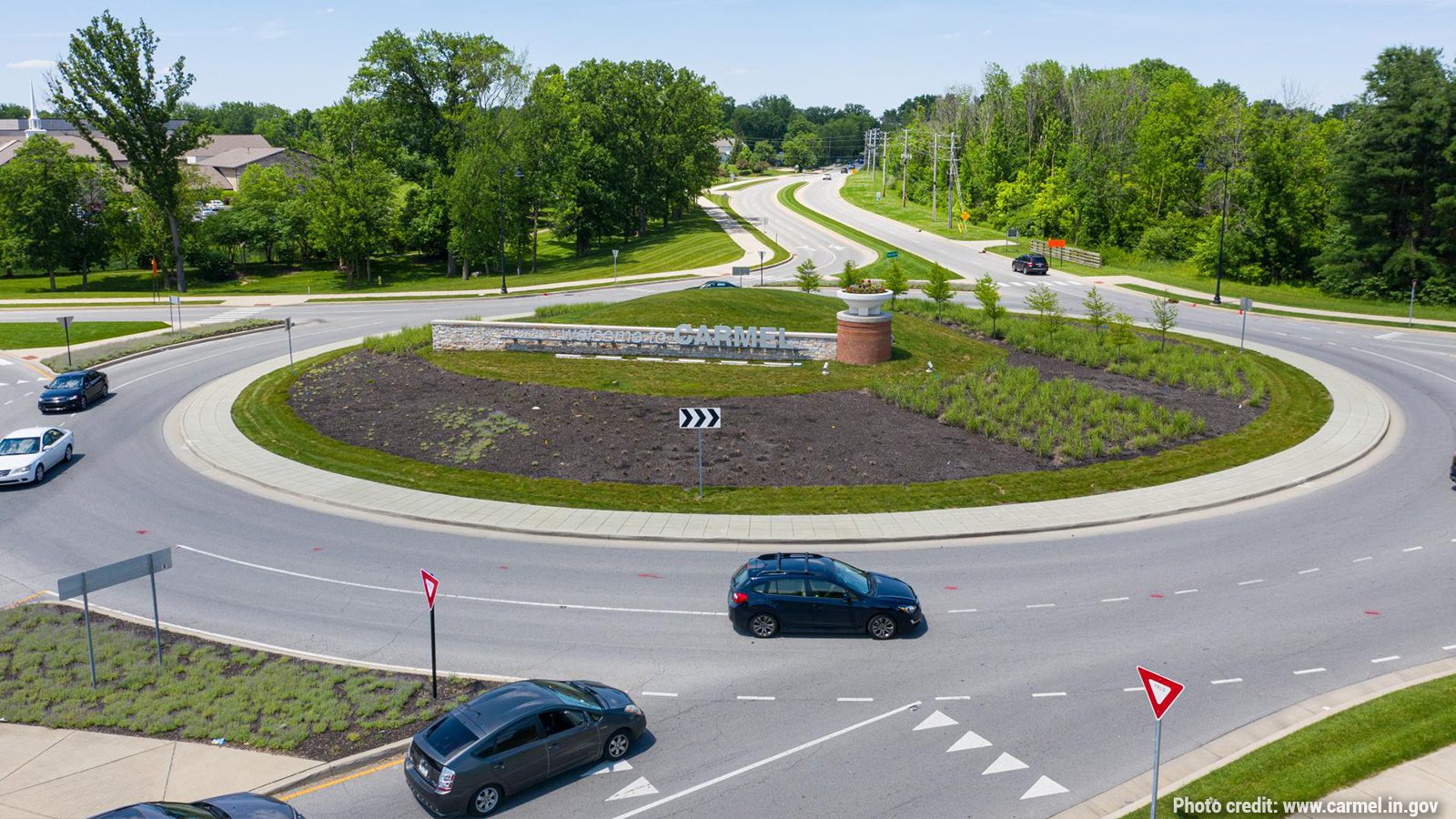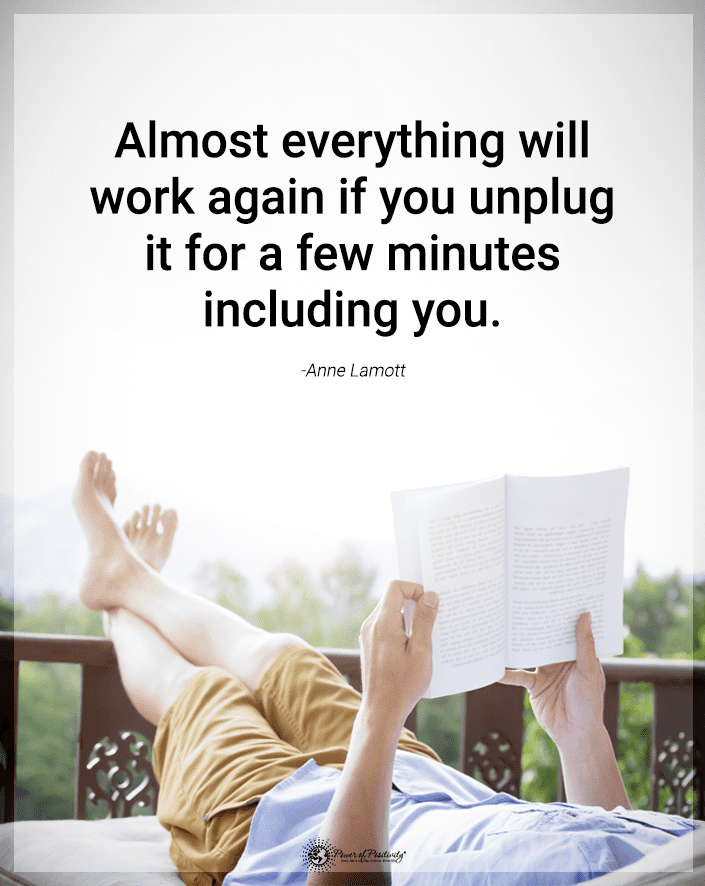A town in Indiana changed its roads as a way to cut carbon emissions and promote safety. Carmel, Indiana, boasts more roundabouts than any other city in the United States. They plan to continue installing them until no traffic lights and stop signs remain.
One street in Carmel has eleven roundabouts within three miles. The middle of these intersections (the island) in Carmel has artwork, the school mascot, and other fun decorations. In addition to the other benefits, they offer a unique way to improve a city and make it visually appealing.
Their most famous roundabout includes box hedges and a French-made bronze fountain with three tiers. It was named International Roundabout of the Year by the U.K. Roundabout Appreciation Society, a group of only six members. However, roundabouts are more than a pleasant sight as they offer many benefits to the town.
Adding roundabouts can cut carbon dioxide emissions and reduce the need for traffic lights while improving traffic flow. They allow for narrow roads, leaving space for pedestrians, grass, and other landscaping pieces. Roundabouts might seem tricky, but understanding the benefits can help you accept them.
What Are Roundabouts?
Roundabouts are compact circular roads with lower speed limits and fewer traffic stops. Vehicles move around a raised island, traveling counterclockwise. The curve forces drivers to slow down, allowing time to look for potential conflicts and move smoothly through the intersection.
These looping intersections require fewer traffic lanes and have smaller angles, decreasing the risk of fatal accidents. Additionally, they are pedestrian friendly with crosswalks outside, allowing for safe walks and bicycle rides.
These circular intersections are alternative options to traditional ones with traffic signals. All vehicles in a roundabout travel in the same direction so that they never have to cross paths. They promote more decision-making time due to the lower speeds, helping drivers make safer choices.
With no traffic lights to install and maintain, roundabouts are also beneficial for the city’s finances. The construction of these circular intersections costs nearly $125,000 less than traditional options. It allows the city to spend money in other areas, improving the aesthetic and functionality of the town.
How Roundabouts Cut Carbon Emissions
Without red lights and stop signs, people no longer have to sit in their running cars and idle for so long while waiting their turn. It reduces the amount of gasoline used, drastically cutting carbon emissions.
Not idling at stop lights also reduces tailpipe emissions. Looping intersections only require stopping until you find an opening in traffic, not having to wait for the light to change.
Studies show that installing roundabouts instead of traditional intersections with traffic lights can protect the environment and human health. It reduces carbon monoxide emissions by up to 45% and carbon dioxide emissions by up to 34%. It can also decrease nitrous emissions by up to 44% and hydrocarbon emissions by up to 40%.
These drastic cuts can make a difference in changing the world. Protecting the environment eases many issues, including climate change and health problems.
The Benefits of Cutting Carbon Emissions
Carbon emissions are gasses in the atmosphere and oceans. More than 80% of the energy used worldwide comes from fossil fuels. This number includes the energy used for electricity, heat production, and transportation.
Carbon emissions are the leading cause of global climate change. Countries with higher incomes and population numbers, including the United States and China, contribute the most to carbon emissions.
Experts indicate that reducing carbon emissions can improve air quality and human health. It also prevents economic losses. Carbon emissions contribute to global warming and air pollution that results in:
- premature death
- respiratory illness
- dementia
- hospitalizations
- missed workdays
- crop losses
Additionally, making immediate changes can help reduce the risk of heat deaths in the future. Carbon emissions will raise the world temperature, resulting in many issues, including more severe air pollution.
Other Ways to Reduce Carbon Emissions
Roundabouts can help cut carbon emissions, but there are things you can do on a personal level, too. You can take ownership of a positive change and know you did your part by making the following changes:
- walk or ride your bike whenever possible
- carpool or use public transportation
- avoid speeding while driving
- make sure you properly inflate your vehicle tires
- maintain your vehicle
- avoid being stuck in traffic
- combine errands so that you don’t have to make as many trips
- insulate and seal your home
- choose energy-efficient appliances
- turn lights off when not in use
- use a programmable thermostat to save energy
- add solar panels to your home
- eat locally-produced, organic food
- use less water to reduce energy usage
- reuse products or buy them used
- recycle whatever you can
- support clean alternatives to fossil fuels
- unplug anything you’re not using
- use cold water for laundry
- avoid using the clothes dryer
- use excess water from the kitchen to water your plants
- switch out your lightbulbs for energy-efficient options
- opt for online billing rather than getting paper in the mail
- turn off your computer
- consume less red meat
- don’t leave your car running
- buy a smaller vehicle
- plant trees
- avoid fast fashion (trendy clothes)
- don’t upgrade electronics until it’s necessary
- compost food scraps and organic matter
- donate things you no longer need
- use your dishwasher to use less water
- plant an organic garden and grow herbs or vegetables at home
How Do Roundabouts Promote Public Safety?
Traditional intersections frequently have right-angle, left-turn, and head-on collisions. These collisions can lead to death because many drivers may travel at high speeds through traffic lights. Reduced traffic speed and same-direction travel make roundabouts a beneficial alternative.
Research shows that roundabouts reduce the number of traffic injuries and fatalities. Other studies target Carmel specifically and show that 64 of their looping intersections have reduced injury crashes by nearly 50%. That percentage jumps for other intersections and decreases for two-lane areas.
Roundabouts only have eight potential conflict points for vehicles, while traditional intersections have 32. The 32 points leave much room for human error, resulting in crashes, injury, or death. While eight conflict points aren’t foolproof, it does alleviate the risk of being in an accident.
Some people think roundabouts are confusing and don’t want them in their town. However, once they learn to use them, they may appreciate the improved safety, environmental protection, and gas savings.
These intersections help prevent head-on collisions and high-speed right-angle vehicle accidents. The decreased risk can help drivers feel calm and aware of their surroundings. Additionally, the average cost of damages from accidents significantly reduces when roundabouts are present.
Without traffic lights, there’s no need for the electricity used at stoplights. Plus, roundabouts won’t stop working after a storm like traffic lights, preventing motorist confusion and traffic accidents. So, in addition to curbing carbon emissions, this infrastructure increases public safety.
Tips for Using Roundabouts
The benefits of roundabouts take time to get used to, but you may find that you enjoy them. If you’ve never driven in a roundabout, learning some tips can help you. These tips can also help if you feel uncomfortable navigating one-lane intersections:
- slow down as you approach the roundabout
- watch for the pedestrian crossing signs to allow people to cross safely
- look left before entering the roundabout
- wait until there is a gap in traffic to enter
- don’t stop when you’re in a roundabout
- use your turn signal when exiting
- drive fifteen to twenty mph
- don’t switch lanes while in the roundabout
- watch for the pedestrian crossing signs to allow people to cross safely
Using two-lane roundabouts is a little different. You can follow the above tips, but also consider the following:
- avoid entering next to buses, trucks, and trailers as they might need multiple lanes
- stay in the left lane to exit to the left and the right for right turns
- choose either traffic lane for going straight
- follow posted signs
As a cyclist or pedestrian, using a roundabout is a little different. These tips include
- use hand signals so that others know your intent
- merge with traffic when riding on the road
- watch your speed
- stay aware of other cyclists, walkers, and vehicles
- use the crosswalks
- don’t cut across the middle
Final Thoughts on the Indiana Town That Changed Their Roads to Cut Carbon Emissions
Carmel, Indiana, uses roundabouts to do their part in cutting carbon emissions. Not only are these intersections beneficial for the environment, but they’re safer and more cost-effective. While learning to navigate a roundabout might sound scary, it doesn’t have to be. You can follow the traffic signs and utilize the tips above to make the shift easier. Once you learn how to use them, you can embrace the benefits and flow through without trouble. Carmel sets a precedent and plans to keep installing roundabouts until all their stop signs and traffic lights are gone. Other cities will likely follow suit, although perhaps not to the same extent. With looping intersections becoming increasingly popular, you’ll want to increase your comfort level with the circular roads.

















 Community
Community

